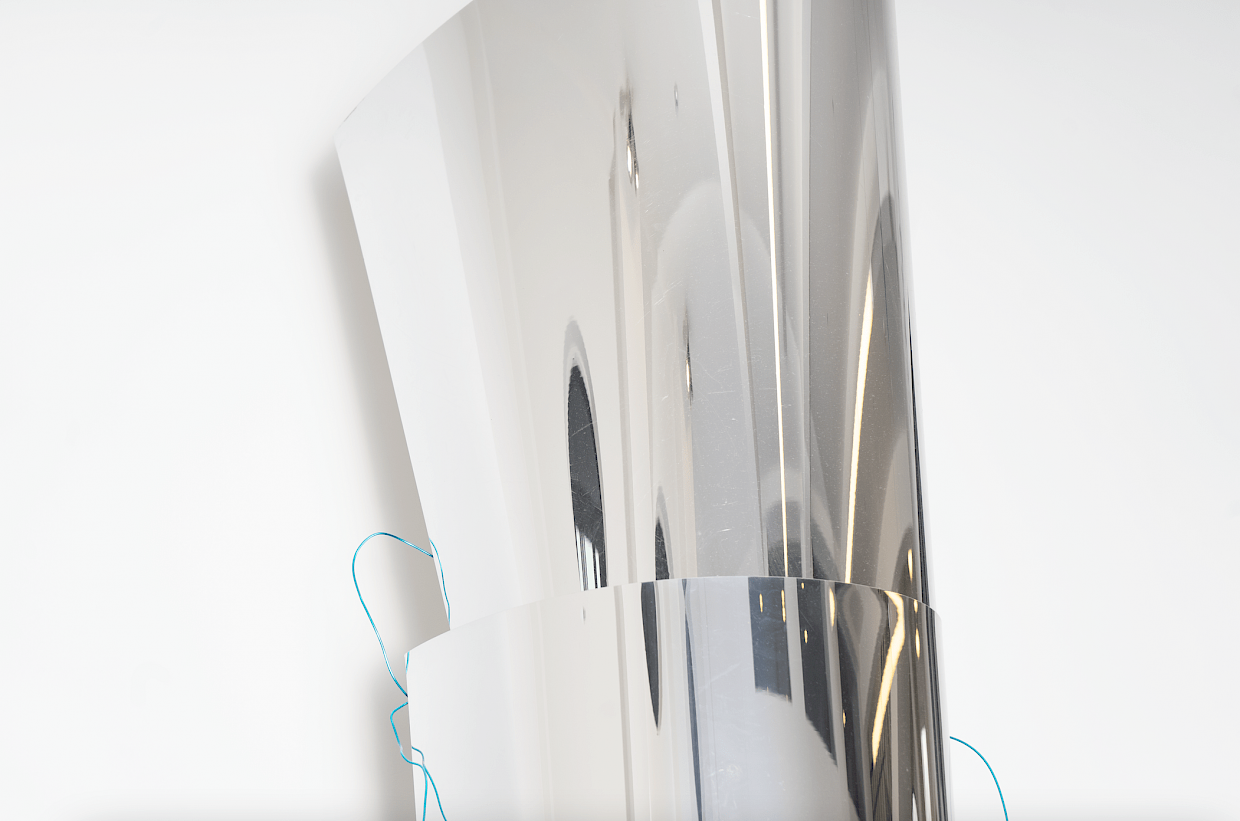

David Jablonowski (b. 1982)
Shopping Basket

The sculpture Shopping Basket doesn’t immediately have the characteristics associated with a traditional sculpture. Many still associate sculptural art with Michelangelo’s David or Rodin’s The Thinker. Classic sculptures with realistic elements bring about admiration in regards to the way they were sculpted and the depiction’s lifelike qualities. But sculptural art has also been modernised.
Viewers with specific ideas about what a sculpture is supposed to look like might approach this work sceptically. To them, it might be a random collection of material. But even from that, fascinating sculptures can come to life, as has happened since the start of the 20th century.
Shopping Basket resembles a totem of which we can’t identify the ritual origins, but one that oozes authority nonetheless. The materials look like they just happened to be around or may have even been taken from the trash, reminiscent of the way a child would freely stack and intuitively assemble things.
Jablonowski researches the sculptural qualities of modern communication technology. In his sculptures, he uses scanners, faxing machines, screens and other high tech elements that, combined with natural materials, result in modern-day sculptures. Shopping Basket also refers to the internet. The wicker basket itself is a literal depiction of the well-known shopping basket icon used to order items online. The archaic shopping basket has become redundant, and the lid pointlessly leans against it. The rising, mirroring pillar represents the overwhelming amount of information, products and services offered via a maze of channels, solicited and unsolicited. The dried annual honesty refers to the commercial aspect of the World Wide Web. They add a nice nostalgic touch to the sculpture.
Shopping Basket has had an unfortunate start within the collection. Several months after the instalment, the sculpture fell over. The circumstances remain unknown. The separate parts were temporarily stored and the artist was invited to restore the work on site. Those who were present during that process, perching down the basket, erecting the silver shaft, dressing the statue with honesty and so on, noticed something special. From a “pile of rubbish from the basement”, something with a soul came to life. For a brief moment, the magic of creation was visible, even to the most sceptical novice. It was like when God’s index finger gave life to Adam in the famous fresco of Michelangelo in the Sistine Chapel. Something ordinary becomes art, right then and there.
